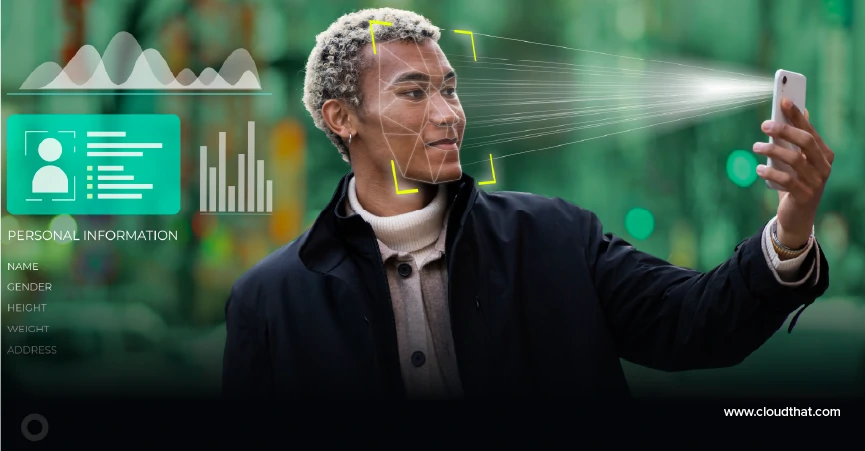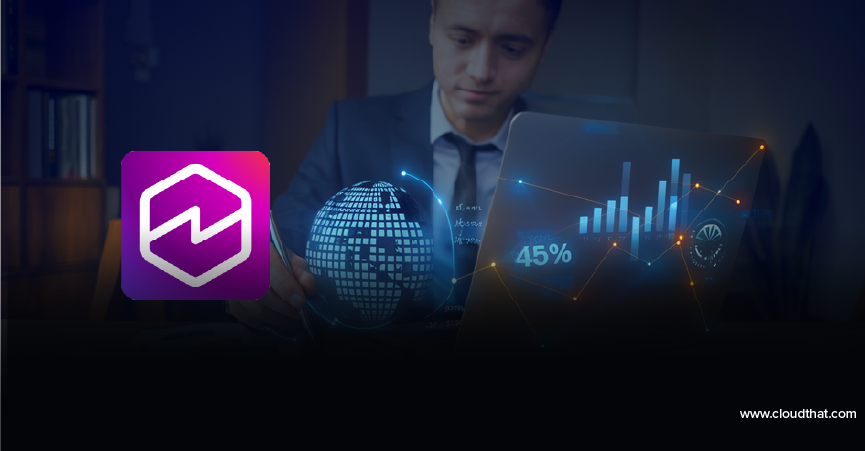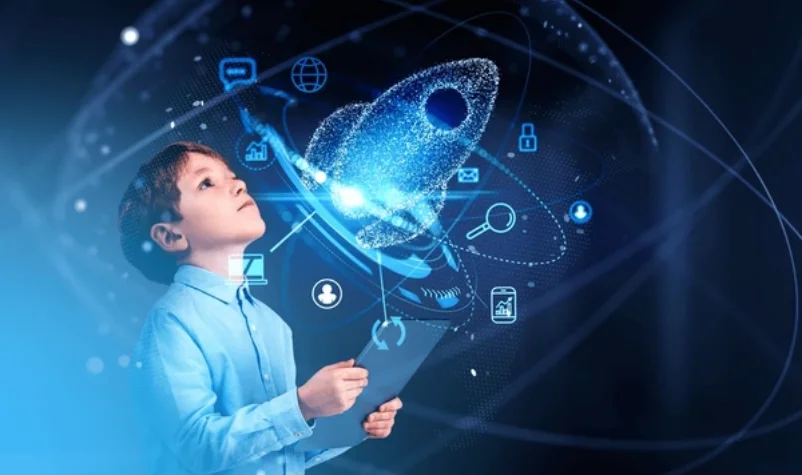|
Voiced by Amazon Polly |
Introduction
Today’s hyper-connected consumers are inundated with digital experiences, ads, recommendations, notifications, and emails. The contemporary user now wants more than one-size-fits-all personalization. They want smart, frictionless, real-time interactions specifically attuned to their needs, context, and behavior.
This transformation has led to hyperpersonalization, a state-of-the-art method fueled by artificial intelligence (AI) that provides highly personalized experiences at scale. This blog discusses how AI fuels hyperpersonalization, its use cases, technical architecture, and future direction, with actionable insights for deployment.
Pioneers in Cloud Consulting & Migration Services
- Reduced infrastructural costs
- Accelerated application deployment
Hyperpersonalization
Hyperpersonalization refers to personalizing content, services, and interactions for single users with real-time data, machine learning, and AI. In most cases, hyperpersonalization contrasts with more common traditional personalization, which depends on fixed user segments. Instead, hyperpersonalization automatically changes depending on:
- Clickstream and browsing habits
- Device context and location
- Transaction history
- Interaction behavior
- Social cues
The intent is to continuously adapting to the user’s needs, serving timely and relevant experiences at digital touchpoints.
How AI Drives Hyperpersonalization?
- Data Aggregation
AI platforms combine user data from various sources such as websites, applications, CRMs, and sensors. Real-time ingestion pipelines are managed by tools such as Kafka, AWS Kinesis, or Snowplow.
- Machine Learning Models
ML models recognize patterns in historical and real-time data to forecast user intent. They drive use cases such as next-best actions, product recommendations, or churn prediction. Tools are Scikit-learn, PyTorch, and Amazon SageMaker.
- Natural Language Processing (NLP)
NLP allows systems to understand user queries, feedback, or content interest in natural language. It drives chatbots, search engines, and dynamic copywriting. Libraries like spaCy, Hugging Face, and OpenAI are typically used.
- Real-Time Decisioning
AI processes incoming signals in real time and responds to the user experience through pop-ups, promotions, UI layout adjustments, or recommendation ranks.
Real-Time Adaptation Engines
Hyperpersonalization at the cutting edge doesn’t just depend on pre-computed user profiles, it uses real-time adaptation, allowing systems to adapt dynamically during user interaction.
Here’s a conceptual Python illustration of how real-time content adaptation could be achieved:
|
1 2 3 4 5 6 7 8 9 10 11 12 13 14 15 16 17 |
def adapt_content(user_profile, context_signals, current_interaction): # Calculate recency-weighted user vector temporal_weights = calculate_temporal_weights(user_profile.interactions) weighted_profile = apply_temporal_weighting(user_profile, temporal_weights) # Integrate contextual signals context_vector = encode_contextual_signals(context_signals) adaptive_profile = merge_vectors(weighted_profile, context_vector, alpha=0.7, beta=0.3) # Apply to content generation content_parameters = derive_generation_parameters(adaptive_profile) personalized_content = content_generator.generate( base_content=content_template, parameters=content_parameters, current_context=current_interaction ) return personalized_content |
This method enables systems to observe slight changes in user behavior or context and immediately react, improving personalization accuracy and user satisfaction.
Real-time applications of hyperpersonalization
- Retail & e-Commerce: Hyperpersonalization increases conversion rates by offering personalized recommendations, dynamic prices, and location-enabled offers.
- Streaming & Entertainment: Sites like Netflix or Spotify personalize content feeds, thumbnails, and even email campaigns according to viewing and listening history.
- Finance & Banking: Banks employ AI to offer personalized credit products, identify fraud patterns, and send alerts based on user expenditure behavior.
- Healthcare: AI systems provide personalized wellness plans, medication reminders, or virtual assistants from EHRs and wearable data.
Technical Architecture
- Data Ingestion: Technologies like Kafka, Kinesis, and Google Pub/Sub intake real-time data from multiple sources like web applications, mobile apps, IoT devices, and customer interaction/ conversational systems.
- Storage: Ingested data is retained in cost-effective and scale-up platforms like BigQuery, Snowflake, or Amazon S3, so structured and unstructured data can be preserved.
- Processing: Apache Spark and Apache Flink perform large-scale data processing and transformation, enabling data preparation for model training or real-time decision-making.
- Model Training: Machine learning models are trained with software such as Amazon SageMaker, Google Vertex AI, and TensorFlow, which provide environments for model building, training, tuning, and deployment.
- Serving Models: Model training models, once trained, are exposed to apps through REST APIs deployed over frameworks like FastAPI or platforms like AWS Personalize to enable real-time predictions and personalization services.
- Frontend: Consumers are delivered personalized content through interfaces developed with tools like React.js, Flutter, or custom personalization SDKs with a flawless, hassle-free user experience across channels.
This infrastructure facilitates quick decision-making, flexible data management, and dynamic personalization flexibility across the touchpoints of various users.
Benefits
- Increased Engagement: By providing tailored content that matches the unique user preferences and behavior, hyperpersonalization leads to users returning and engaging more with services and platforms.
- Improved Conversions: When users receive offers and recommendations highly relevant to their interests and immediate context, they are more likely to act, resulting in enhanced conversion rates for marketing and sales initiatives.
- Lowered Churn: Predictive analytics can detect the early warning signs of disaffection or dissatisfaction and enable systems to automatically initiate retention campaigns that keep customers engaged, thus reducing the churn.
- Operational Efficiency: Personalization processes are automated by AI, largely minimizing human intervention. This increases overall efficiency so teams can focus on strategy instead of execution.
Challenges
- Data Privacy & Ethics: Organizations must comply with GDPR and CCPA regulations, obtain consent, and anonymize sensitive information.
- Infrastructure Complexity: Operating real-time models with low latency demands, high availability, caching practices, and economical compute solutions.
- Bias & Fairness: ML models can perpetuate bias if not audited properly. Explainability, fairness testing, and diverse datasets are the most important techniques to avoid this.
Future Trends
- Generative AI for Personalization: Applying models such as GPT-4 to dynamically produce personalized emails, interfaces, or promotions.
- Context-Aware UX: Interfaces that adjust by changing layout, content, or tone in response to emotional state or setting.
- Omnichannel Personalization: One experience everywhere, mobile, web, email, and store touchpoints.
Conclusion
Hyperpersonalization driven by AI is a paradigm change for user experience. It breaks the limitations of ordinary personalization and enables the production of smart, contextual, adaptive, and dynamic user experiences in real-time.
Companies must align innovation with accountability, transparency, equity, and adherence to properly leverage their power.
With the continuing growth of AI, hyperpersonalization will emerge as a foundational digital strategy in every sector.
Drop a query if you have any questions regarding Hyperpersonalization and we will get back to you quickly.
Empowering organizations to become ‘data driven’ enterprises with our Cloud experts.
- Reduced infrastructure costs
- Timely data-driven decisions
About CloudThat
CloudThat is an award-winning company and the first in India to offer cloud training and consulting services worldwide. As a Microsoft Solutions Partner, AWS Advanced Tier Training Partner, and Google Cloud Platform Partner, CloudThat has empowered over 850,000 professionals through 600+ cloud certifications winning global recognition for its training excellence including 20 MCT Trainers in Microsoft’s Global Top 100 and an impressive 12 awards in the last 8 years. CloudThat specializes in Cloud Migration, Data Platforms, DevOps, IoT, and cutting-edge technologies like Gen AI & AI/ML. It has delivered over 500 consulting projects for 250+ organizations in 30+ countries as it continues to empower professionals and enterprises to thrive in the digital-first world.
FAQs
1. What makes hyperpersonalization unique compared to any other regular personalization?
ANS: – Rule-based segments are applied in classical personalization; AI and real-time data are applied in hyperpersonalization to personalize content and services for everyone dynamically.
2. What sectors benefit the most from hyperpersonalization?
ANS: – The sectors that gain the most are retail, finance, health, entertainment, and tourism, with more interaction and customer satisfaction.

WRITTEN BY Daniya Muzammil
Daniya works as a Research Associate at CloudThat, specializing in backend development and cloud-native architectures. She designs scalable solutions leveraging AWS services with expertise in Amazon CloudWatch for monitoring and AWS CloudFormation for automation. Skilled in Python, React, HTML, and CSS, Daniya also experiments with IoT and Raspberry Pi projects, integrating edge devices with modern cloud systems.


 Login
Login


 May 21, 2025
May 21, 2025 PREV
PREV










Comments